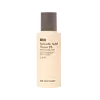What's inside
What's inside
 Key Ingredients
Key Ingredients

 Benefits
Benefits

 Concerns
Concerns

 Ingredients Side-by-side
Ingredients Side-by-side

Water
Skin ConditioningButylene Glycol
HumectantGlycerin
HumectantPentylene Glycol
Skin ConditioningSalicylic Acid
MaskingAmylopectin
Dextrin
AbsorbentXanthan Gum
EmulsifyingPanthenol
Skin ConditioningSuccinic Acid
BufferingTranexamic Acid
AstringentAllantoin
Skin ConditioningPropylene Glycol
HumectantCamellia Sinensis Leaf Extract
AntimicrobialCentella Asiatica Leaf Extract
Skin ConditioningAloe Barbadensis Leaf Extract
EmollientSodium Hyaluronate
HumectantOpuntia Ficus-Indica Extract
Skin ConditioningPhenoxyethanol
PreservativeDisodium EDTA
1,2-Hexanediol
Skin ConditioningCitric Acid
BufferingPotassium Sorbate
PreservativeSodium Benzoate
MaskingEthylhexylglycerin
Skin ConditioningWater, Butylene Glycol, Glycerin, Pentylene Glycol, Salicylic Acid, Amylopectin, Dextrin, Xanthan Gum, Panthenol, Succinic Acid, Tranexamic Acid, Allantoin, Propylene Glycol, Camellia Sinensis Leaf Extract, Centella Asiatica Leaf Extract, Aloe Barbadensis Leaf Extract, Sodium Hyaluronate, Opuntia Ficus-Indica Extract, Phenoxyethanol, Disodium EDTA, 1,2-Hexanediol, Citric Acid, Potassium Sorbate, Sodium Benzoate, Ethylhexylglycerin
Water
Skin ConditioningNiacinamide
SmoothingMethylpropanediol
SolventIsohexadecane
EmollientArtemisia Capillaris Extract
Centella Asiatica Extract
CleansingSalicylic Acid
MaskingFomes Officinalis Extract
Skin ProtectingAluminum Starch Octenylsuccinate
AbsorbentPEG-6 Caprylic/Capric Glycerides
EmulsifyingAcrylates/Beheneth-25 Methacrylate Copolymer
Sodium PCA
HumectantAllantoin
Skin ConditioningDipotassium Glycyrrhizate
HumectantDMDM Hydantoin
PreservativeTetrasodium EDTA
Sodium Hyaluronate
HumectantTrimethylpentanediol/Adipic Acid Copolymer
Skin ConditioningXanthan Gum
EmulsifyingAmylopectin
Dextrin
AbsorbentPolydextrose
HumectantWater, Niacinamide, Methylpropanediol, Isohexadecane, Artemisia Capillaris Extract, Centella Asiatica Extract, Salicylic Acid, Fomes Officinalis Extract, Aluminum Starch Octenylsuccinate, PEG-6 Caprylic/Capric Glycerides, Acrylates/Beheneth-25 Methacrylate Copolymer, Sodium PCA, Allantoin, Dipotassium Glycyrrhizate, DMDM Hydantoin, Tetrasodium EDTA, Sodium Hyaluronate, Trimethylpentanediol/Adipic Acid Copolymer, Xanthan Gum, Amylopectin, Dextrin, Polydextrose
Ingredients Explained
These ingredients are found in both products.
Ingredients higher up in an ingredient list are typically present in a larger amount.
Allantoin is a soothing ingredient known for its protective and moisturizingg properties. Because of this, it is often added to products with strong active ingredients.
Studies show higher concentrations of this ingredient can promote wound healing.
Though it can be derived from the comfrey plant, allantoin is produced synthetically for cosmetic products to ensure purity.
Learn more about AllantoinWe don't have a description for Amylopectin yet.
Dextrin is used to thicken a product and helps bind ingredients together. It is created from starch and glycogen.
As an emulsifier, dextrin prevents ingredients from separating. This helps elongate a product's shelf life.
Studies show coating UV filters with dextrin prevents these ingredients from being absorbed. This helps UV ingredients last longer on the skin.
Learn more about DextrinSalicylic Acid (also known as beta hydroxy acid or BHA) is a well-known ingredient for treating skin that struggles with acne and clogged pores. It exfoliates both the skin's surface and deep within the pores to help clear out buildup, control oil, and reduce inflammation.
Unlike AHAs (alpha hydroxy acids), salicylic acid is oil-soluble. This allows it to penetrate into pores which makes it especially effective for treating blackheads and preventing future breakouts.
Salicylic acid is also known for its soothing properties. It has a similar structure to aspirin and can calm inflamed or irritated skin, making it a good option for acne-prone skin that is also sensitive.
Concentrations of 0.5-2% are recognized by the U.S. FDA as an over-the-counter topical acne product.
It can cause irritation and/or dryness if one's skin already has a compromised moisture barrier, so it's best to focus on repairing that before introducing this ingredient into your routine.
While salicylic acid does not increase sun sensitivity, it’s still important to wear sunscreen daily to protect your skin.
If you are looking for the ingredient called BHA or Butylated Hydroxyanisole, click here.
Learn more about Salicylic AcidSodium Hyaluronate is hyaluronic acid's salt form. It is commonly derived from the sodium salt of hyaluronic acid.
Like hyaluronic acid, it is great at holding water and acts as a humectant. This makes it a great skin hydrating ingredient.
Sodium Hyaluronate is naturally occurring in our bodies and is mostly found in eye fluid and joints.
These are some other common types of Hyaluronic Acid:
Learn more about Sodium HyaluronateWater. It's the most common cosmetic ingredient of all. You'll usually see it at the top of ingredient lists, meaning that it makes up the largest part of the product.
So why is it so popular? Water most often acts as a solvent - this means that it helps dissolve other ingredients into the formulation.
You'll also recognize water as that liquid we all need to stay alive. If you see this, drink a glass of water. Stay hydrated!
Learn more about WaterXanthan gum is used as a stabilizer and thickener within cosmetic products. It helps give products a sticky, thick feeling - preventing them from being too runny.
On the technical side of things, xanthan gum is a polysaccharide - a combination consisting of multiple sugar molecules bonded together.
Xanthan gum is a pretty common and great ingredient. It is a natural, non-toxic, non-irritating ingredient that is also commonly used in food products.
Learn more about Xanthan Gum